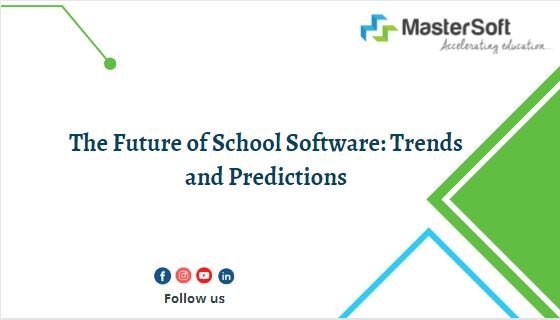The Future of School Software: Trends and Predictions

In today’s rapidly evolving educational landscape, technology plays a pivotal role in shaping the way schools operate and manage their day-to-day activities. Student Information Systems (SIS), also known as School management systems, have been instrumental in streamlining administrative tasks, enhancing communication between stakeholders, and improving overall educational outcomes. As we look ahead, it’s essential to explore the trends and predictions that will define the future of Student Information Systems in education.
Cloud-Based SIS: The New Norm
One of the most significant trends in the future of school software, including Student Information Systems, is the widespread adoption of cloud-based solutions. Cloud technology offers scalability, flexibility, and accessibility, making it easier for schools to manage their student data securely and efficiently. With cloud-based Student Information Systems, schools can access information from anywhere, promote collaboration among staff, and ensure data backups and security updates are seamlessly managed.
Personalized Learning with AI
Artificial Intelligence (AI) is poised to revolutionize education by enabling personalized learning experiences. Student Information Systems integrated with AI can analyze student data to identify individual learning patterns, suggest customized learning materials, and even predict student performance. This trend will help educators tailor their teaching methods to meet the unique needs of each student, ultimately improving learning outcomes.
Enhanced Data Analytics
Data-driven decision-making is becoming increasingly important in education. Student Information Systems will continue to evolve to provide more robust data analytics capabilities. This includes predictive analytics to identify at-risk students, assess the effectiveness of teaching strategies, and monitor the overall health of the school. Schools will use these insights to make informed decisions that benefit both students and staff. Ms Dynamics 365 ranks as one of the best ERP systems because it is a comprehensive platform that meets all the requirements for management.
Mobile-Friendly Interfaces
In the future, Student Information Systems will be even more mobile-friendly, catering to the needs of busy educators and parents who are constantly on the go. Mobile apps and responsive web interfaces will enable stakeholders to access important information such as grades, attendance, and announcements conveniently from their smartphones or tablets, fostering better communication between schools and parents.
Cybersecurity Measures
As Student Information Systems store sensitive student data, cybersecurity will remain a top concern. The future of Student Information Systems will involve robust security measures, including multi-factor authentication, data encryption, and regular security audits to protect against data breaches and cyberattacks. Ensuring the privacy and security of student information will be non-negotiable.
Integration with Learning Management Systems (LMS)
To create a seamless educational experience, Student Information Systems will increasingly integrate with Learning Management Systems. This integration will allow for the easy transfer of student data, grades, and assignments between systems. It will also enable teachers to manage their courses and track student progress more efficiently.
Also, Read more about How x*x*x is equal to 2 and enhance your knowledge.
Blockchain for Transcript Verification
Blockchain technology will play a role in making educational records more secure and tamper-proof. In the future, Student Information Systems may use blockchain to store and verify student transcripts and diplomas, ensuring the authenticity of academic achievements and simplifying the college application process.
Compliance with Data Privacy Regulations
As data privacy regulations like GDPR and CCPA become more stringent, Student Information Systems providers will need to ensure their systems are compliant. This includes giving students and parents more control over their data and implementing features that facilitate compliance with these regulations.
Conclusion
The future of Student Information Systems is bright and promising, with advancements in technology and a growing focus on data-driven decision-making in education. Cloud-based solutions, AI-driven personalization, enhanced data analytics, mobile accessibility, cybersecurity, and integration with other educational tools are key trends that will shape the landscape of Student Information Systems. As educational institutions adapt to these changes, they can look forward to more efficient operations, improved student outcomes, and a more engaging and connected learning experience for all stakeholders. Stay tuned for the exciting developments in the world of workday software, as these trends continue to unfold.




